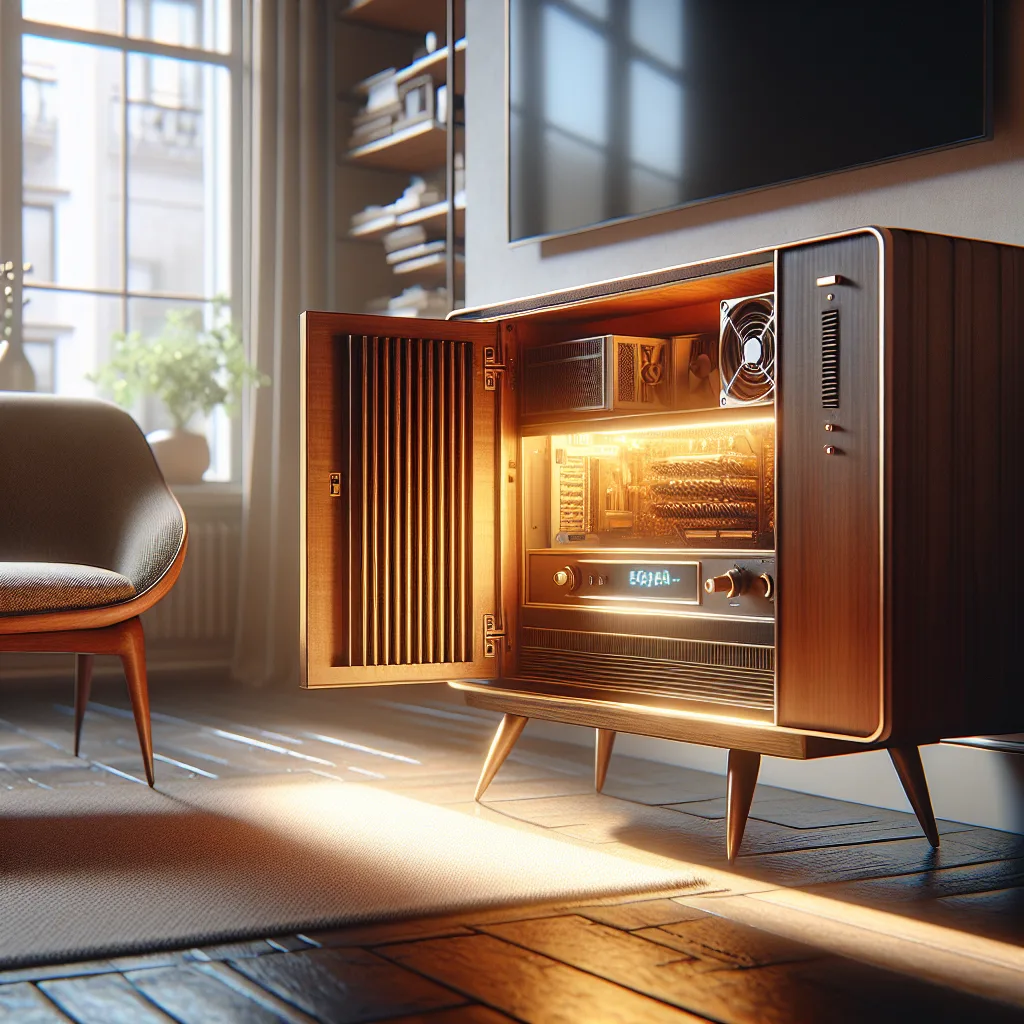Tired of boring PC towers? Discover how to build a powerful computer inside a piece of vintage furniture for a unique, stealthy, and stylish homelab setup.
I love technology. I really do. But I’ve never loved the way most of it looks. For years, my home office has been a battleground between function and style. On one side, the powerful computer I need for work and play. On the other, the clean, warm, and vaguely mid-century aesthetic I want for my home.
The two have never gotten along.
The typical computer tower is a metal box. It can be black, white, or lit up like a traveling carnival, but it’s still a box. It screams “computer” and doesn’t blend with wood, plants, and soft lighting. I was tired of it. So I decided to build a new homelab with one primary goal: it had to be completely invisible.
Meet the ARM56
I started hunting for furniture. Not desks, not shelves, but a proper piece of vintage furniture that could secretly house a computer. After a few weeks of searching through thrift stores and online marketplaces, I found it: a beautiful, solid wood media console from 1956.
It had great lines, that unmistakable smell of old, well-cared-for wood, and just the right amount of space inside. This became the heart of the project, which I’ve nicknamed the “ARM56″—short for A Re-Modeled ’56.
The idea was simple. Gut the inside, keep the outside pristine, and build a powerful PC within its wooden shell.
The Challenge: Making It Actually Work
Hiding a computer is easy. Making it run well without melting is hard. My two biggest challenges were airflow and cable management.
1. Keeping It Cool
Computers generate a lot of heat. A wooden box is basically an oven. Without proper airflow, I’d have a very expensive space heater that couldn’t even run a web browser.
- Intake and Exhaust: I carefully measured and drilled a series of holes in the back panel, which faces the wall. I used a pattern that looked almost decorative, so it wouldn’t be an eyesore.
- Silent Fans: I mounted two large, ultra-quiet fans inside—one for intake, one for exhaust. They pull cool air in from the bottom back, guide it over the components, and push hot air out the top back. They run at a low RPM, so you can’t even hear them.
- Strategic Placement: The motherboard and processor are mounted in the direct path of the airflow. The power supply, which has its own fan, is positioned to exhaust its heat directly out the back.
2. Hiding the Wires
The second problem was the mess of cables. The beauty of a vintage cabinet is its clean exterior. The last thing I wanted was a tangle of power cords, USB cables, and display wires ruining the illusion.
I drilled one discreet hole in the floor of the cabinet, right behind a leg where it’s impossible to see. All the necessary cables are bundled together and run through there, hidden from view.
The Fun Part: The Specs (and the Puns)
Now for the fun stuff. The setup is running a custom “Windows Sill” image. It’s a cheeky name, I know, but it feels appropriate since the whole thing sits right by my window.
But the absolute best feature? The storage.
I’ve got over 1,000 square feet of storage.
…Wait, no, that’s my apartment. Inside the cabinet, though, there’s more than enough room for a few terabytes of digital storage, with plenty of physical space left over for my old records and a bottle of whiskey. That’s a kind of storage you can’t get with a standard PC tower.
More Than Just a Computer
Now, when friends come over, they compliment the beautiful mid-century console in the living room. They have no idea it’s the machine running my media server, handling my backups, and letting me tinker with new software.
It’s a quiet, powerful, and stealthy machine hiding in plain sight.
This project was a reminder that technology doesn’t have to exist in a sterile, beige box. You can integrate it into your home and your life in a way that feels personal and creative. You just have to think outside the box—or in this case, inside a much older, more interesting one.
